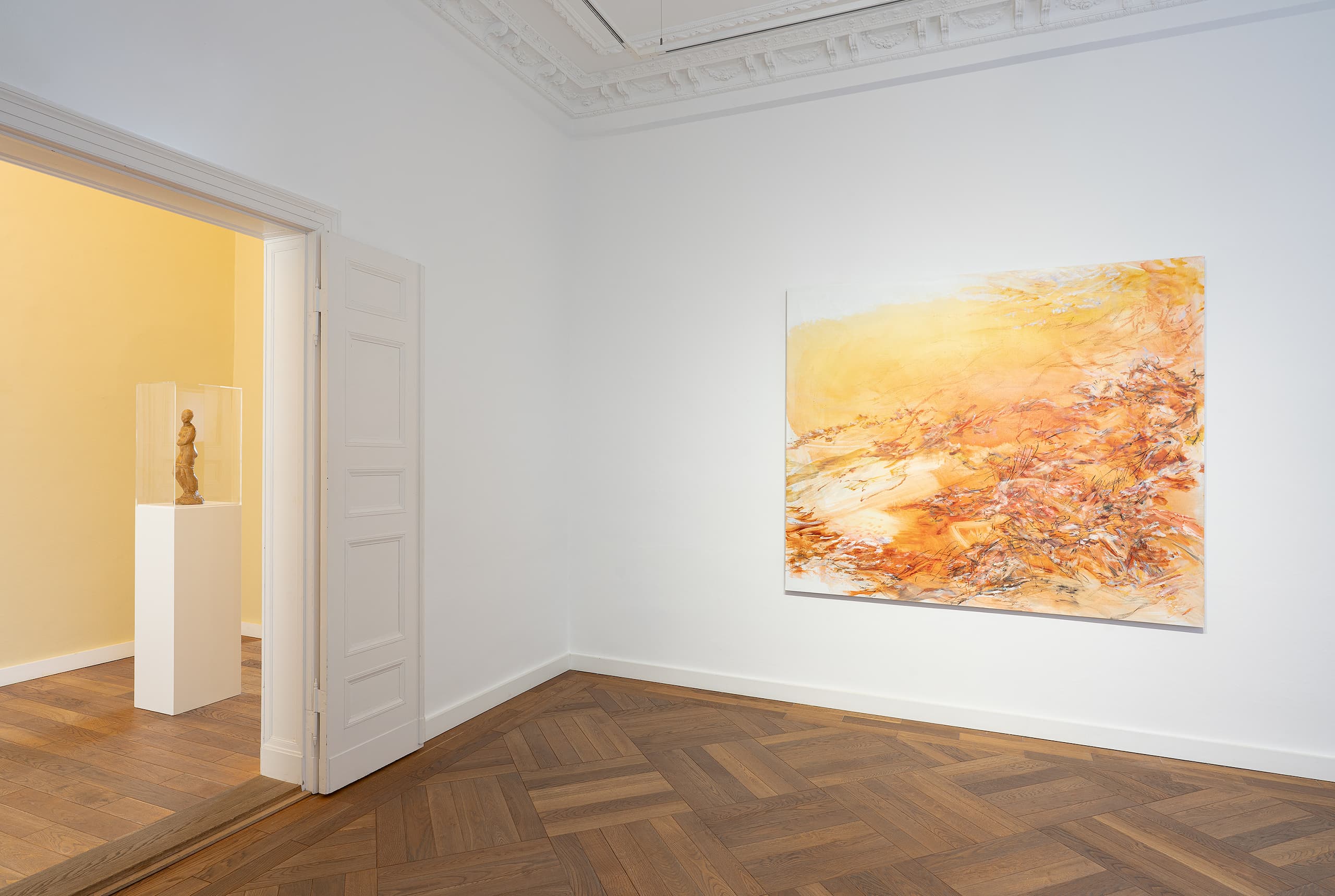1989
1989 is a fateful year – also for Villa Schöningen, that house near the Glienicke Bridge, at the junction between Berlin and Potsdam, between East and West, where American and Soviet agents were exchanged before the camera eyes of the world during the Cold War. In 1989, the children housed in the week home on the German-German border became witnesses to the peaceful revolution. They saw cars suddenly driving over that white strip that had been the death strip just a short while ago. In 1989, it is also the name of the first exhibition with which Villa Schöningen will be opened as a German-German museum on November 9, 2009 – a project in cooperation with the Kunsthalle Vienna, or in other words, a satellite of the exhibition in Vienna.
Why Potsdam, why this strange Villa Schöningen? Like the rings of a tree, the eras and episodes accumulate around the Italian tower villa built in 1843 by Ludwig Persius, the architect of the Prussian court: founded on the aesthetic whim of a romantic king, enlivened and inhabited by the Jewish co-founder of the Deutsche Bank, a place of art, then a victim of German Nazis and Russian Communists, later a socialist DDR children’s educational institution, and finally an “almost” victim of a real estate development idea.
Villa Schöningen was both Villa Kunterbunt and Villa Todtraurig. After careful preservation and restoration in accordance with historical preservation standards, it has now become a museum – a public place of history, art, and freedom. It has become a small, privately funded art and history museum for everyone. Not with a didactic pointing finger, but lively, using modern technologies and contemporary references. The founder of the German Historical Museum, Christoph Stölzl, and the American art collector Ronald Lauder helped find the right path and tone.
The exhibition concept is built on two special pillars: the use of computer screens as the central medium for photographs, texts, and films, and the call to the people of Potsdam and Berlin to tell their stories in front of the camera as eyewitnesses to events around the Glienicke Bridge and the Villa. History is presented not from above, not as an intimidating science for experts, but as an inviting mosaic, a picture in which many can participate and which can always be further complemented.
In the exhibition Spies, Wall, Children’s Home – at the bridge between worlds, the horror of totalitarian regimes becomes palpable. Perpetrators speak as much as victims and observers. However, history and stories are only understandable and moving when they have a connection to the present, which is why there is a second level in the Museum Villa Schöningen: on the first floor, there is space for contemporary art that, in the broadest sense, deals with the themes of the place – the Cold War, German division, German reunification, totalitarianism and democracy, unfreedom, and freedom. And then there’s 1989. Here, changing exhibitions by different curators are shown, adding questioning, disturbing, or reassuring elements to the experiences in the ground-floor exhibition.
It all begins with the exhibition 1989, curated by Gerald Matt and conceived in close cooperation with the Kunsthalle Vienna from the outset. Special thanks go to the participating artists Rainer Ganahl, Stephan Huber, Anna Jermolaewa, Ilya and Emilia Kabakov, Josephine Mackseper, Boris Mikhailov, Marcel Odenbach, Martin Parr, Susan Philipsz, Marek Piwowski, Neo Rauch, and Pedro Reyes, as well as the lenders: among them, private collectors such as Elizabeth Dee, New York, Jutta and Claus Claussen, Tübingen, Christiane and Martin Middeke, Munich, and Paul Schwenk, Haigerloch, as well as galleries including Isabella Bortolozzi, Miriam Charim, and Lisa Ungar (CUC Berlin), Reinhard Hauss, Andreas Osarek (Galerie Crone), Thaddaeus Ropac, and Nicola von Senger. The Essl Museum and the collection of Deutsche Bank have also supported the exhibition with loans, and for this, we would like to extend our special thanks to Karl-Heinz and Agnes Essl, Ines Ratz, Andrea Wintoniak, and Friedhelm Hütte.
1989 in Vienna and Berlin/Potsdam – these are two reference points of an idea. At both locations, you can witness the concrete consequences brought about by the fall of the Wall and the Iron Curtain. Both places, the economic and cultural hub of Vienna and the formerly divided German capital of Berlin and its neighboring town Potsdam, bear witness to a turning point that marked the end of a dark era and the beginning of a new chapter in European history. Condensing the artistic reflection of these upheavals into an exhibition concept that does not proceed in a banal narrative but approaches the core of events associatively, so to speak, from the margins, and touches upon the genius loci of the exhibition sites, was the self-imposed task of Gerald Matt.
We are greatly indebted to him, not only for the exhibitions that visitors can see in Vienna and Berlin/Potsdam in the coming months but also for the countless valuable pieces of advice Gerald Matt has given us in the conception and design of the Museum Villa Schöningen. He has become one of the most important midwives of this new and entirely independent museum. Special thanks also go to curator Catherine Hug and other members of the Kunsthalle Vienna team such as Synne Genzmer and Mario Kojetinsky. They have made a significant contribution to making the first exhibition at Villa Schöningen and the accompanying catalog not only an exciting project in terms of content but also one that has brought so much joy in its preparation. Our dream is for Villa Schöningen, this witness to history, battered by time between Berlin and Potsdam, between East and West, to become what the house and its garden have never been to this day: a joyful place of freedom. A beginning has been made with 1989 in the year 2009.
